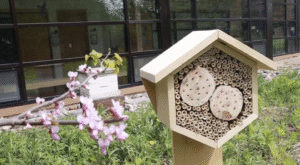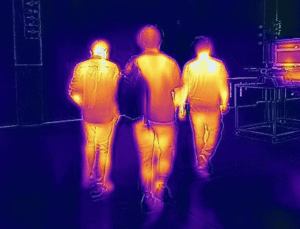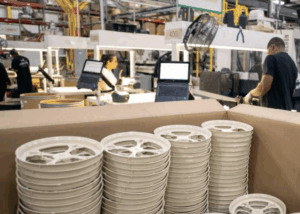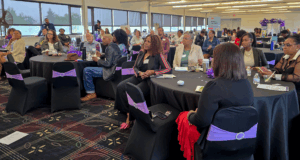
- Kim Kisner
- Community
- 10/08/2024
Shaping Sustainable Communities through Smart Design
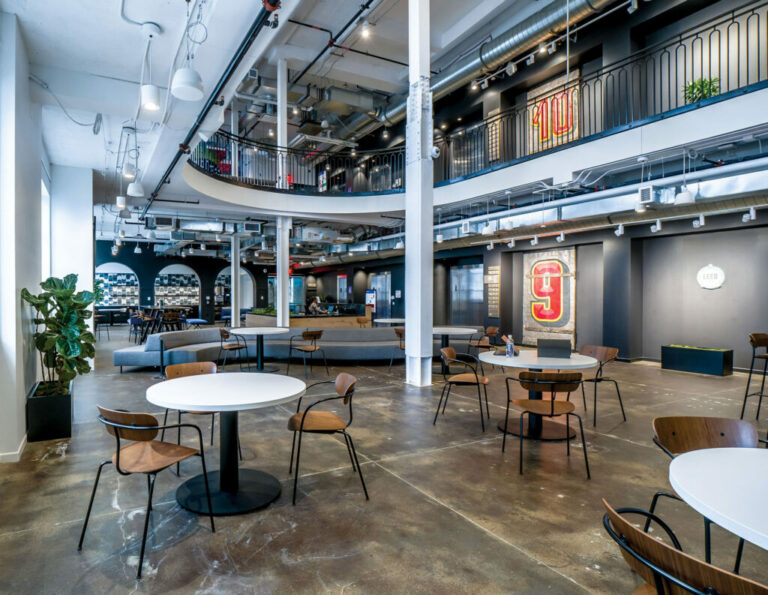
The U.S. Green Building Council (USGBC) is a nonprofit organization dedicated to fostering prosperous, healthy, and resilient communities through sustainable practices. With a focus on shaping the built environment, USGBC believes that buildings and communities can be designed, constructed, and operated in ways that benefit both people and the planet.
To this end, USGBC launched the LEED (Leadership in Energy and Environmental Design) certification program in 2000, which is now one of the most widely recognized and used green building rating systems in the world, promoting sustainable building practices and helping to reduce the environmental impact of buildings and communities.
SBD Detroit interviewed Lana Crouse, Regional Director U.S. Market Transformation & Development for USGBC, and joining us was Laura Long, who – as a Senior Designer at NORR, a global architecture and engineering firm – offers insights from a design perspective as it relates to Southeast Michigan.

Q: What role do buildings play in greenhouse gas emissions?
Long:
42% of annual CO2 emissions come from the built environment. 27% of this is from operational carbon, which is the carbon created from operating and maintaining the life of the building. The remaining 15% of CO2 emissions come from embodied carbon, the greenhouse gas emissions emitted from the manufacturing, transportation, installation, maintenance, construction, and disposal of building and infrastructure materials.
Crouse:
Since buildings account for this significant portion of greenhouse gases and resource depletion, it’s crucial that we design them to minimize resource use such as water and electricity and focus on site selection so that ultimately buildings are healthier for those who inhabit them. By doing so, they do less harm to the environment. When designing and building structures, we can create spaces that also address critical issues like embodied carbon and operational carbon – the issues Laura outlined.
Q: What are the biggest trends in green building currently?
Long:
One major trend is the requirement to track greenhouse gas emissions, which became a prerequisite in LEED 4.0 in March. This means that buildings cannot achieve LEED certification without accounting for these emissions. Another emerging trend is creating a full building lifecycle assessment (LCA) early in the design process. This assessment allows architects to evaluate the environmental impacts of products across their entire lifecycle. LCAs are pushing designers to focus on selecting materials that can reduce both embodied carbon and operational carbon, while also promoting a “cradle-to-cradle” approach to eliminate waste and help encourage manufacturers to develop systems to reclaim products at the end of their lifecycle and reuse them.

Crouse:
This approach – and LEED Certification – applies to all building types, including homes, communities, and districts. In Southeast Michigan, Royal Oak and Oakland County just certified under the LEED for Cities program, which shows that it’s not just about individual buildings — it’s about creating more sustainable communities where all factors, including utilities and quality of life, are taken into account.
Q: How does Michigan’s approach to green building compare to the rest of the country?
Crouse:
Michigan ranks 20th in the total number of LEED projects among all U.S. states and territories. Progress made in green building across the U.S. is driven by both policies or mandates at the state or local level as well as by the market. While we are seeing market-driven growth in the state, Michigan lacks some of these comprehensive mandates. However, we are seeing some local governments take action. Cities like Ann Arbor and Detroit have started to establish benchmarking ordinances, but we still have opportunities to grow and implement more sustainable building codes.
Q: What are the challenges for green building in Southeast Michigan?
Long:
One challenge is having enough builders and contractors who understand green building practices. Another is that municipalities and local governments need to drive the shift toward more sustainable building codes. While we have champions in the private sector, like Bedrock and the Erb Family Foundation, sustainability often needs to be dictated by governing bodies for widespread adoption.
Crouse:
A major challenge for design teams is budget constraints. Many owners believe high-efficiency operating systems cost more, and while upfront costs may or may not be higher, they lead to significant savings and environmental benefits over time. Sustainable buildings also improve employee retention and productivity by prioritizing health and well-being through elements like biophilic design and thermal comfort.
Q: What are the opportunities for green building in Southeast Michigan?
Crouse:
Education is key — especially when it comes to helping people understand how sustainable buildings contribute to the health and well-being of those who live and work in them. Cities like Detroit and Ann Arbor are driving these efforts, but we need to reach surrounding areas to continue the push for green building.
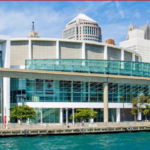
Q: Are there any standout green building projects in Southeast Michigan?
Crouse:
Huntington Place in Detroit achieved LEED Gold certification, the first structure of its size in Michigan to do so. It was the first convention center certified through LEED v4.1 in the world.
The WPP space (Marquette Building, 243 West Congress, Detroit) is another example, recently renovated and now owned by Bedrock.
Q: How do Michigan’s climate and geography affect green building strategies?
Long:
Michigan’s cool, humid climate and proximity to the Great Lakes present unique challenges. One of the biggest issues we face is managing stormwater to prevent pollution in the Great Lakes. Separating sewer and stormwater systems is crucial to reducing runoff into our water sources. Using LEED and low-impact development strategies, we can manage stormwater more effectively within individual project sites.
Crouse:
LEED is constantly evolving to meet these challenges. In 2025, we’ll roll out LEED version 5, which will place an even greater emphasis on climate resilience, stormwater management, and designing buildings to withstand extreme weather events.
Q: What do you think USGBC’s role will be in the future of green building?
Crouse:
USGBC will continue to provide guidance to help development teams achieve sustainability and high-performing building goals. Our role is to understand the market and continually push things forward. This includes updating our LEED rating system—now set to update every five years—as building codes evolve, design trends shift, and new technologies emerge. Our goal is to ensure we push the envelope and make buildings truly high performing.
We also aim to continue bringing together the best and brightest industry professionals to drive education, innovation, and progress.
USGBC is also focused on public policy, advocating for stronger sustainability standards and more sustainable development practices at the local, national, and global levels.
For those passionate about green building, there are plenty of opportunities to get involved.
Be sure to subscribe to our newsletter for regular updates on sustainable business practices in and around Detroit.
Kim Kisner
- All
- Business
- Community
- Education
- Events

Schaeffler is a global automotive and industrial supplier with operations in Southeast Michigan, where it works across the region’s manufacturing and supplier network. As sustainability, decarbonization and supply chain resilience become central to how products are designed and sourced, the region’s role in shaping next-generation manufacturing continues to evolve. SBN Detroit interviewed Courtney Quenneville, who oversees supplier sustainability, to discuss the realities of sustainable sourcing, what decarbonizing a...
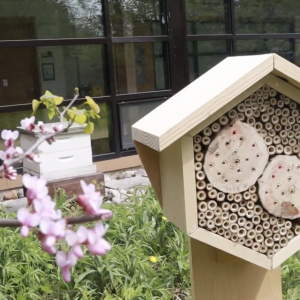
Pollinators are essential to Michigan’s ecosystems, food systems, and long-term environmental resilience — yet they face increasing threats from habitat loss, pesticides, disease, and climate change. As Southeast Michigan looks for scalable, science-based approaches to ecological stewardship, the University of Michigan-Dearborn has emerged as a voice in pollinator conservation, sustainability, and community education. SBN Detroit interviewed Dr. David Susko, Associate Professor of Biology and Chair of Biology in...
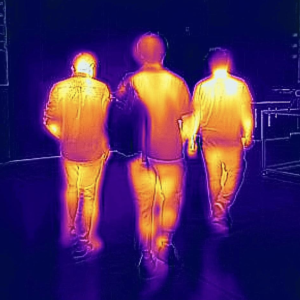
ThermoVerse is a Detroit-based urban innovation startup founded by engineer and researcher Shantonio Birch. The company’s work centers on advanced thermal energy storage and people-focused building technologies that reduce waste, stabilize indoor environments, and free up electrical capacity. SBN Detroit interviewed Birch about the future of grid resiliency, energy equity, and why Southeast Michigan is positioned to lead in next-generation smart city innovation. Q: What is the impetus...


